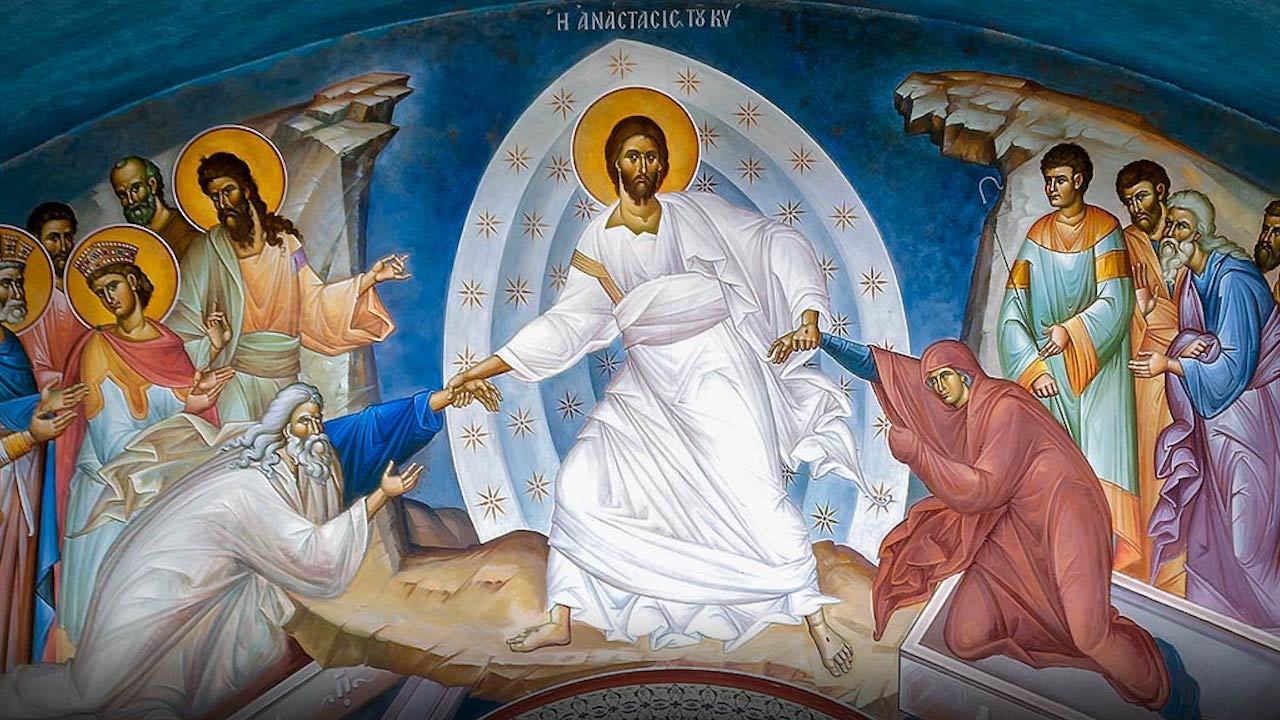Throughout this current season of fifty days we celebrate the resurrection of our Lord and God and Savior Jesus Christ from the dead, proving by the length of this feast its superiority over the others. For if these fifty days also include the yearly commemoration of the ascension into heaven, it too shows the distinction between the risen Master and those of His servants who have from time to time been brought back to life. All who were raised from the dead were raised by other people, and when they died again, returned to the earth. But when Christ rose from the dead, death no longer had any power over Him (Rom. 6.9). He alone resurrected Himself on the third day and, instead of returning again to the earth, He ascended into heaven, making our human substance share the same throne as the Father, being equally divine. He alone became the beginning of the coming resurrection of all (Col. 1:18), the first fruits of them that slept (1 Cor. 15:20), the firstborn from the dead (Col. 1:18), and the Father of the world to come (Is. 9:6 LXX). “As in Adam all,” sinners and the just, “die, so in Christ shall all,” both sinners and the just, “be made alive.” But every man in his own order: Christ the first fruits; afterward they that are Christ’s at His coming. Then cometh the end, when He shall have to put down all rule and all authority and power and put all His enemies under His feet. The last enemy that shall be destroyed is death” (1 Cor. 15:22-26), at the time of the General Resurrection, “at the last trump” (1 Cor. 15:52). “For this corruptible must put on incorruption, and this mortal must put on immortality” (1 Cor. 15:53).
The Lord’s bounty has procured this bounty for us, and that is why it is the only feast we keep for so many days, seeing that it is immortal, indestructible, and eternal, and thus prefigures the future blessedness of the saints, whence pain, sorrow, and sighing shall flee away (Is. 35:10 LXX). In that place inspired, unchanging joy and celebration will be unceasing, for it is the dwelling place of those who truly rejoice. For this reason the grace of the Spirit ordained that before this present season we should pass the holy forty days in fasting, vigil, prayer, and all kinds of training in the virtues. Through those forty days He shows that in this world the life of those who are being saved consists only of repentance and a way of life pleasing to God. By means of these fifty days through which we are now passing, however, He demonstrates the ease and enjoyment which await those who have lived here and now in struggles for God’s sake.
This is why Lent last for forty days and is closely linked with the commemoration of the Lord’s saving passion, and fasting comes to an end after seven weeks. This season, on the other hand, is for fifty days, and includes the Lord’s ascension from earth to heaven and the descent and distribution of the divine Spirit. This present age is divided into weeks of seven days, is made up of four seasons, four parts and four elements, and upon those who make themselves sharers in Christ’s sufferings through their deeds here and now, it bestows the feast of Pentecost, which begins in the eighth week and ends in the eighth week, going beyond the honorable numbers seven and four. This feast bears witness, through the Lord’s resurrection of the human race, when those who are worthy will be raised up in the clouds to meet the Lord, and thereafter shall be ever at rest with God (cf. 1 Thess. 4:17).
~From Homily 19 On the Gospel Concerning the Samaritan Woman, translated by Christopher Veniamin









